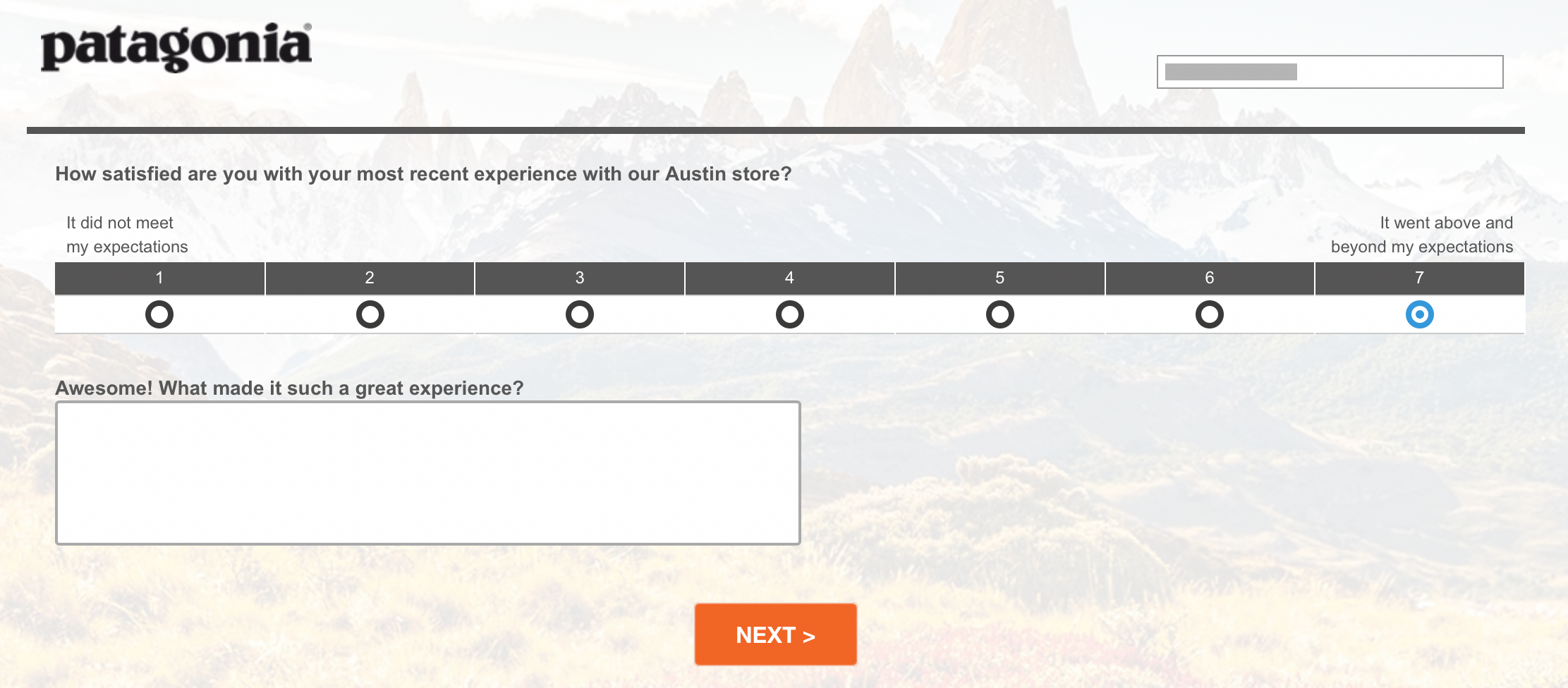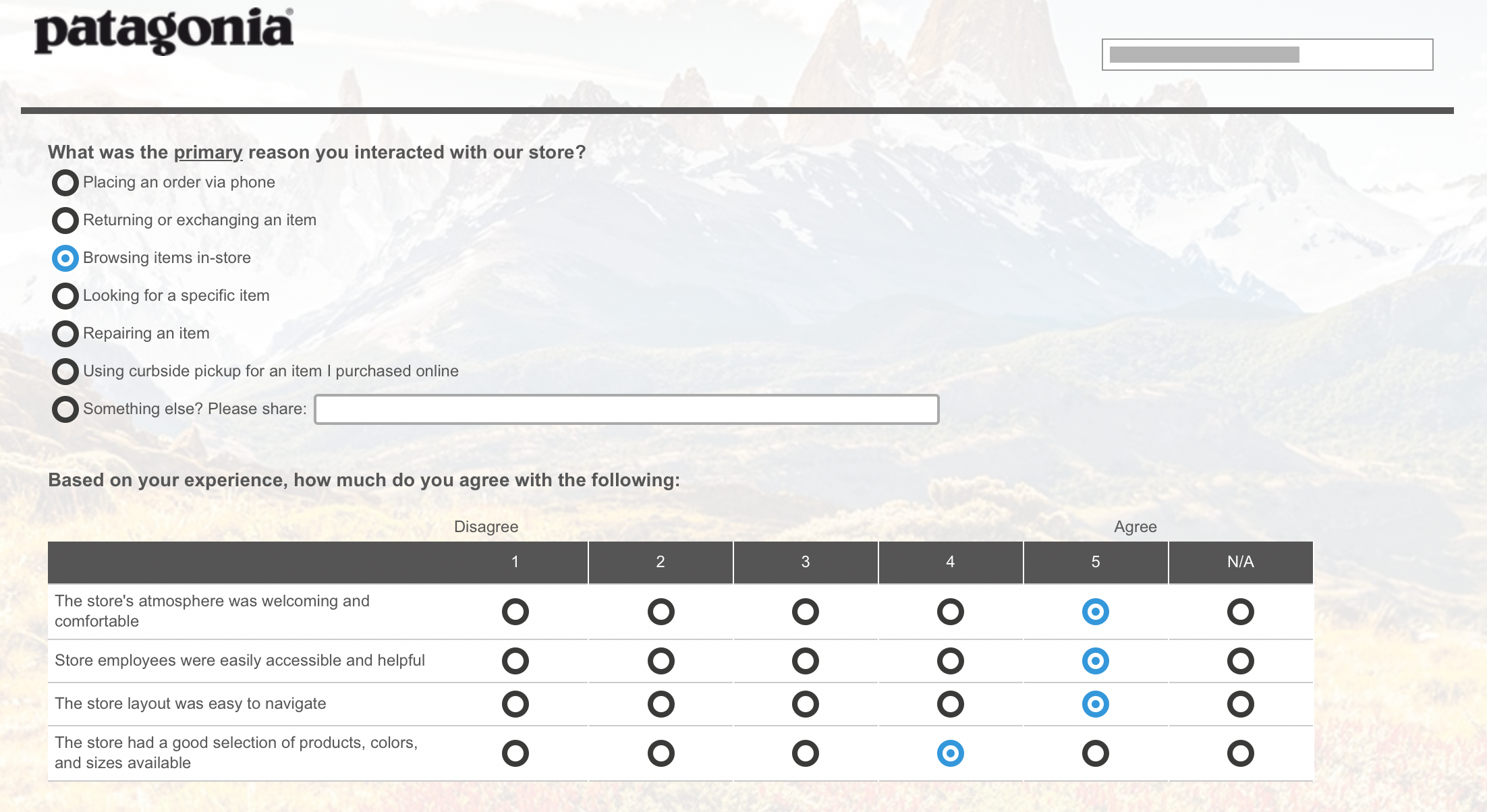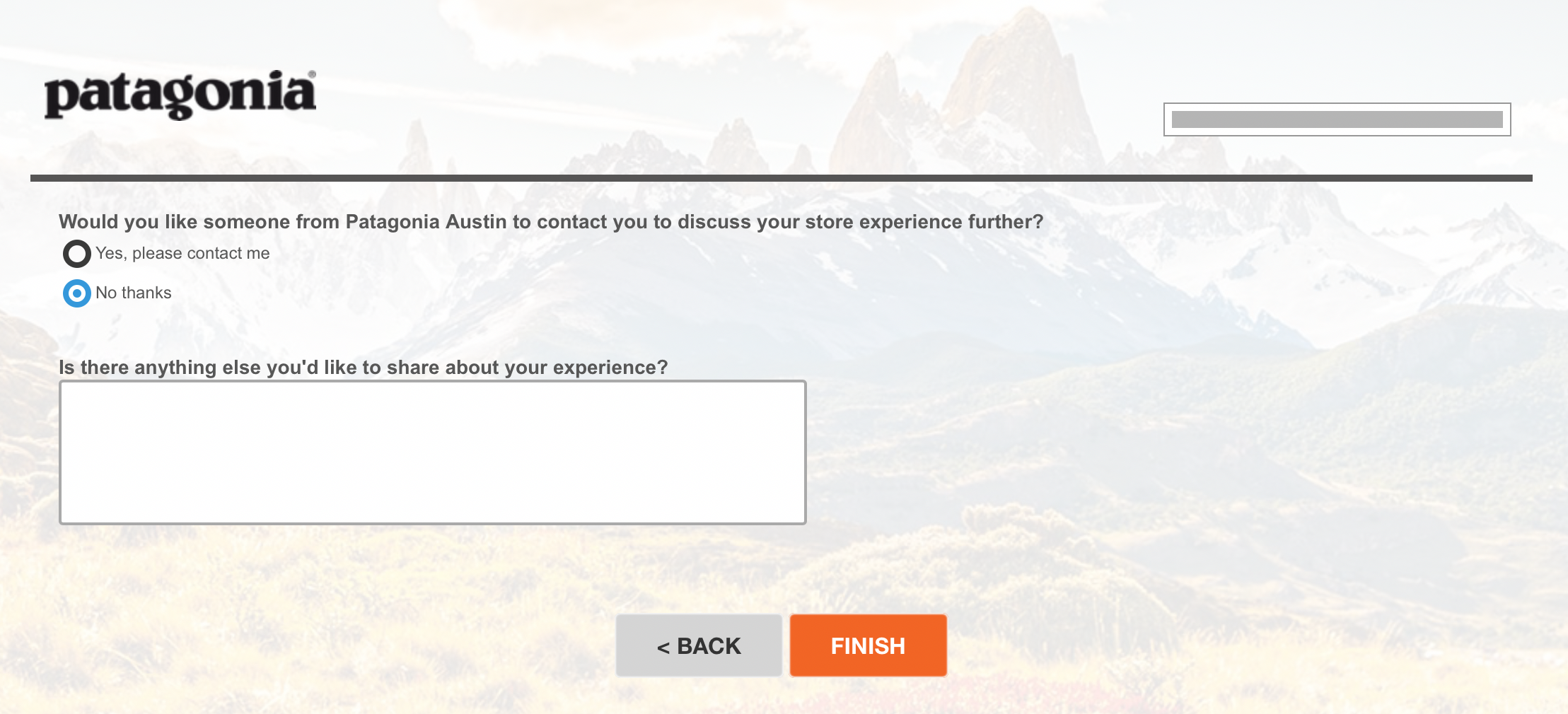CRO and Customer Experience Strategist
The ultimate guide to customer loyalty through user research
CRO and Customer Experience Strategist
Table of content
1. Customer loyalty has become indispensable
Customer loyalty has become indispensable
Customer loyalty is essential for all companies that intend to be successful in the long term. Today it is understood that acquiring new customers is more expensive than creating loyalty in your current customer base. The data show that it can be six to seven times more expensive to acquire a new customer than to create loyalty in an existing customer, according to a study conducted by Hubspot. If you don't think that is true for your company, remember that in September 2023 all the acquisition costs for your digital campaigns will be more expensive due to the disappearance of third-party cookies.
As you can see, focusing your efforts on creating customer loyalty will be more relevant than ever. But now that the point has been made clear, where should you start? What are the best methods? And how can you accomplish this without having to completely upend your entire business?
In this guide, we'll explore how user research can help you create customer loyalty. We'll also examine how companies can create user-focused experiences, use customer feedback to improve customer experience, and create effective loyalty programs.
Why is customer loyalty so important?
As customers, we all intuitively understand that giving our loyalty to a brand represents a big advantage for the latter. Long-term success built on customer loyalty can be explained in three main points.
-
Loyal customers are likely to continue doing business with you, which means that you can count on receiving continuing support and revenue from them (lifetime value or LTV).
-
Loyal customers are also more likely to recommend your products and services to other people, which can help you gain new customers through word of mouth.
-
Lastly, loyal customers are more likely to overlook possible mistakes or shortcomings, which can help you maintain a positive reputation and reduce the risk of negative reviews or bad press.
What is user research?
User research is a process that aims to understand the needs, behaviours, and expectations of customers. There are many methods for conducting user research, the most commonly used being surveys, interviews, observation of users in real-life situations, and analytics.
Ultimately, the goal is to deeply understand users in order to create products and services that they like, that will improve their lives, and that they will reuse, recommend, and share.
How can user research help develop customer loyalty?
To create customer loyalty, it's not enough to simply fulfill needs—you need to go further and understand the source of those needs. Do they arise from a particular frustration? Or some motivation? Is there something in particular about your product or service that appeals to users? If so, what aspect? The answers to all these questions, and many others, are useful for better understanding the needs of users.
The good news is that you're sitting on a gold mine. Your customers, whether you have only a couple or a couple thousand, already know what they need and the reasons they choose your company (or don't). All that remains is to obtain this information. Fortunately, 74% of consumers want to help brands improve the experience they offer.
Plus, user research can help you during each phase of customer loyalty creation. Whether it's to develop a solution that fulfills a need, segment your audiences for better communication with them, or even build a loyalty program, there's no shortage of good reasons to get started with user research.
Understanding the consumer
To make your customers loyal you first have to understand them. Companies can use voice of customer (VOC), UX research, and analytics to understand the needs, expectations, and motivations of their customers.
Voice of consumer (VOC) and surveys
Customer feedback is a gold mine of valuable information for improving customer experience. Here are some of the best ways of collecting feedback.
Customer service feedback: Customer service is often on the front lines when it comes to regularly talking to any customer facing an issue, in need of help or feeling dissatisfied. If your company has a customer service department, get in touch with them right away to find out the top 10 recurring questions or irritants.
Net Promoter Score (NPS): NPS is a key indicator for customer satisfaction. It measures the likelihood that customers will recommend your company to their friends, family, and co-workers. It can also be very useful for comparing the satisfaction of your customers compared with those of a competitor as well as for detecting points of sale that underperform compared to other locations.
Consumer opinion platforms: Opinion platforms (e.g., Google reviews or Amazon customer reviews) and social media are excellent ways to learn what people think of your company. Customers are often more likely to share their opinion on social media than to answer customer satisfaction surveys. Listen to their feedback!
Surveys: There's no need for us to get into defining these, since we all know basically what surveys provide.
However, let's look particularly at something important about surveys that is often underestimated. A good survey that is well designed and targeted can reveal any deficiencies in the eyes of your customers. While the concept is straightforward, the hard part is being able to ask the right questions to arrive at the needed answers, rather than just hearing what you want to hear.
Surveys can take many forms, from simple questionnaires composed of two yes-or-no questions provided on a page of your website to long surveys of fifteen or so open-ended questions sent to customers once a year. These surveys can be used to understand customer preferences, evaluate their overall happiness or satisfaction with specific elements, and to collect comments on products and services. By using surveys regularly, you can understand the evolution of customer preferences and make changes as a result.
|
Tip: The one survey you should consider sending right away is a survey following a purchase or qualification of a potential lead. Sending a survey to a customer who just purchased a product is the perfect time for exploring their motivations for the purchase and understanding why they chose your product instead of another one. For example, here is what Patagonia sends out:
|
Interviews
Another method that needs no introduction is the interview. An interview is a more qualitative approach that is loaded with information and it is particularly useful when you have not yet become familiar with your customers or when you’re just starting your business. By talking to your customers and asking them open questions in real time, you can obtain all kinds of detailed information about their experiences and explore certain subjects more deeply (and sometimes even learn new information you would never have guessed!).
When well conducted, interviews can help you to quickly determine what differentiates you in the eyes of your customers and the emotions that led them to take action.
Yes, you read that right—although we would like to believe that reason causes customers to initiate some behaviour, unfortunately it's emotion! If you're of a different opinion, I encourage you to read Daniel Kahneman's Thinking, Fast and Slow.
User testing and observation
Observation is another way of understanding users when they are interacting with your brand. This method involves directly observing consumer behaviour when interacting with your product or service.
This could be within a controlled environment, such as when testing users during a specific task, or in a natural environment, whether a physical or digital location. For digital, there are tools such as Hotjar that let you watch users interacting with your website. You can literally see their mouse move, click, and hesitate while browsing your pages as if you were looking over their shoulders.
User tests and observation are the perfect way to identify friction during the customer experience and find ways to improve it. Identifying moments of friction in their experience is essential, because these can have a negative impact on customer satisfaction and loyalty. When a customer encounters obstacles or difficulties performing an action or transaction, this can lead to frustration, anger, and a sense of deception. If these sources of friction aren't corrected, they can lead to a loss of trust and reduction in customer engagement with the brand, which may have a direct impact on the company's sales and reputation.
Analytics
Raw data is the new gold. Analytics provides quantitative data on your customers' behaviour. By analyzing your website's traffic, engagement with your social media pages, and other parameters, you can identify the most popular pages or products, the places where customers stop during the sales funnel, and the marketing campaigns that are the most effective. This information can help you make decisions based on data in order to improve customer experience.
Understanding your customers is the first step in building a customer-centric experience that will help bring them back to your business again and again. On the one hand, analytics lets you understand how your site/service/product is used. On the other hand, surveys, interviews, and observation sessions let you grasp why your site/service/product is used. By combining different user research methods, you get a bigger picture of your customers' needs, preferences, and behaviour in order to create a customized experience that responds to their needs and exceeds their expectations.
All these methods are good ones. Ideally you should start with the one you feel most in control of. Getting good professional advice will help you save time and avoid many pitfalls. The more mature a company is, the more methods it can use, cross-referencing the data from each method to arrive at stronger, more actionable insights.
Activate what you learned to create a user-centred experience
Once you have obtained an exhaustive understanding of users, or at least one that is enriched with feedback, it's time to take action and create, optimize, and make available a new experience (or a part of one) that is focused on your new understanding of your users.
This involves designing all interactions with your customers based on their needs and desires. There are several strategies that could be relevant to achieving this goal.
Optimization and testing
As a CX (customer experience) and testing expert, my experience has led me to consider experimentation as the method that is the most powerful, tangible, and objective.
Simply put, the idea is to take insights gleaned from research (using the methods outlined earlier) as a starting point and design a new experience, then test it with users to determine its impact. With A/B testing, you can determine whether changes made have a positive impact on users, and above all identify the real impact these changes have on company revenue. Testing variations of a website lets you measure the conversion rate for each version, and in some cases the return on investment (ROI), so you can choose the most profitable approach.
There are many advantages to adopting an optimization and testing approach, but the most important is that, in my opinion, it lets you quantify the impact of changes to the experience in terms of dollars. For managers that need to make decisions, nothing is more concrete than a tested change that is supported by statistically significant data, such as a $100,000 gain in one year.
Personalization
Personalization is one of the best ways to show customers that you appreciate them. Consider it from their point of view: How satisfying would it be to use a web solution that is tailored for your preferences and needs? As a consumer, I don't feel any need to look elsewhere if a brand is serving my needs well, don't you agree? Being satisfied with a product or service makes for easy decisions when it comes time to choose a brand to fulfill this same need in the future.
You therefore need to create a unique experience for each customer based on their preferences and purchase habits. Personalization can be present at many levels: for example, calling a customer by their first name, recommending products based on past purchases, or personalizing an interface by changing the message on the homepage.
|
Case study : |
Omnichannel communication
For brands, omnichannel communication involves offering a unified, fluid experience to customers across all communication channels. Whether it's on a website, in a newsletter, on social media, or on a mobile application, or even in a physical store, the story must be the same.
For example, suppose a customer buys a product online and wants to ask a question about their order. They could look at the brand's website to find an answer, send an email to customer service, contact the brand on social media, or even use a live chatbot on a mobile application. In a well-designed omnichannel experience, no matter which method is selected, the customer must receive a coherent, personalized response that considers their purchase history and preferences.
Creating loyalty programs
Ultimately you need to develop a customer loyalty approach, whether through a customer relationship or loyalty program.
Customer relationship programs of all types have the goal of maintaining a relationship with customers and creating engagement with the brand. These programs reward customers for their loyalty to the brand and engagement with the company.
As illustrated in the visual below, these programs aren't just for the elite! Any company, irrespective of size, can initiate one starting today. Here's how to go about it.
-1.png?width=4706&height=3111&name=Frame%202%20(2)-1.png)
Customer relationship program without access to transactional data
Creating a customer relationship program without access to transactional data is the most accessible strategy. Its simplicity often makes it a favourite of those with fewer resources to invest in a more advanced relationship strategy.
Email, newsletters, and social networks are tools accessible to any organization, and they can be used to develop and maintain relationships with customers. There are many possible options for implementation.
- Email can be used to send personalized messages, exclusive offers, and updates on new products or services.
- Informational newsletters are an excellent way to share richer, more personalized content with customers, including stories, tips, and ideas, while maintaining their interest in the brand.
- Social networks are also an effective platform for interacting with customers, answering their questions, and receiving comments.
Relationship programs without transactional data can also help companies collect data on their customers' preferences and interests. These data can then be used to create more advanced, personalized loyalty programs in the future, once methods for identifying customers have been established, such as loyalty cards, phone numbers, and email addresses.
For companies that don't know where to begin, setting up this type of program is an excellent way to start building lasting relationships with customers.
Membership program
A membership program (also called a subscription program) involves offering exclusive advantages in exchange for a paid subscription.
Heard of Amazon Prime? This is a perfect example of a successful membership program. It's a program that invites customers to subscribe to Amazon Prime to take advantage of free delivery and access to streaming movies and TV shows, as well as discounts on certain products in exchange for a monthly payment.
It's an ideal program for any organization that sells consumer products and wants to create a regular source of revenue.
This type of program relies on segmenting a database of transactions, which means that customers can be categorized based on their purchasing behaviour (watch our webinar on the topic!). Advantages offered to customers depend on their level of engagement and purchase history. Membership programs also enable the collection of data on customer preferences, which can be used to personalize offers and their respective advantages.
Customer relationship program with transactional data
Like membership programs, customer relationship programs with transactional data work by using transactional data to segment customers based on their purchase behaviour. The goal is to offer personalized offers and services based on purchase behaviour and level of engagement.
Companies like Reitmans and Aritzia routinely ask for customers' email addresses during in-store transactions. This gives them an identifier that lets them connect customer transactions and track their purchase history, frequency, average shopping cart amount, categories of purchased products, etc.
However, the customer does not have to pay anything. The upside for the company lies in an increase to the average shopping cart amount and/or purchase frequency. This program basically focuses on offering a unique customer experience. This translates into advantages such as exclusive offers, discounts on certain products, or invitations to special events. Companies can also use the data collected to personalize promotional offers and suggest products and services that fulfill the individual preferences of customers.
In the case of Reitmans and Aritzia, these retailers offer certain benefits such as emailed purchase receipts, advance notifications of future promotions, a longer period for returning merchandise, etc. In short, these are services that cost very little, but which let customers benefit from a better experience
By using these programs, companies can increase their customers' engagement, strengthen their loyalty, and increase their sales. The personalized advantages offered as part of these programs can help make customers feel appreciated and strengthen their connection with the brand.
Loyalty program and premium program with points
These kinds of programs offer points systems. The principle is simple: reward any purchase or engagement with the brand with loyalty points. The more points the customer collects, the bigger their rewards. The points-based loyalty program is usually free, while a premium points program includes fees that must be paid by customers. In exchange, they receive additional advantages, such as multiplied points, discounts on certain products, or exclusive services. These programs are an excellent way for companies to retain their customers and encourage them to continue buying their products and services, even during periods of inflation.
|
Case Study : |
Customers appreciate the additional advantages they can access and feel more highly valued.
Next-gen loyalty programs
The most advanced level of loyalty program is the next-gen program. This type of program is on the technological cutting edge and uses advanced predictive analytics, hyper-segmentation, and integration of artificial intelligence (AI) to drive personalized offers and content to each customer.
The programs at Target, Sephora, and Starbucks are excellent examples of next-gen programs. For these companies, loyalty programs and customer retention are the focus of their business strategies. The Starbucks Rewards program offers personalized product recommendations, exclusive offers, and rewards based on individual purchase behaviour. Customers can use the mobile application to order, pay for their drinks, and even jump to the front of the line, which greatly improves users' purchase experience. After all, what could be more satisfying than to cut in front of twenty people who are all waiting to receive their order?
Next-gen programs use several data sources, particularly transactional data and behavioural data (data on email interactions, online browsing of the brand website, social media interactions, and customer comments), to offer customers a tailored loyalty experience. Customers feel in-control and appreciated, which encourages them to return to the brand again and again.
To sum up, data collected from loyalty programs represent an excellent opportunity for companies to better understand their customers, retain the best customers, and increase the purchase frequency and/or average shopping cart value for different customer segments. No matter which type of program you choose, make sure it corresponds to your customers' needs and expectations and use the data collected to personalize the experience for each customer.
The last step is to get started!
Finally, whether you belong to a small, medium, or large company, the important thing is to start by putting your customers at the centre of your thought process.
User research is where it all begins. It's the key element for improving experience and creating customer loyalty. It's at this stage that you can highlight the opportunities available to you, your services and your business. By comparing your customers' needs and fulfilling them in a proactive way, you'll establish and develop a trust-based relationship, which is the first step towards creating loyalty.
By implementing what you've learned through a program of experimentation, personalization, or relationship marketing, you'll incrementally improve your services. In the end, it's your entire brand experience that will be perfected.
By implementing the strategies discussed here, you will not only create loyal customers, but also differentiate yourself from your competitors, strengthen your brand image, and generate growth in the long term.
Creating customer loyalty is a continual process that requires paying constant attention to customer needs and preferences. By applying the strategies described in this guide and by working with experts, you can maximize the potential loyalty of your customers and quickly generate revenue.
The goal isn't to completely transform your company, but to help it slowly evolve. Starting this process is what counts. The direction you choose to take to promote growth is what counts. And this growth is directly related to customer satisfaction.
So when will you get started?




%20(1)-1.jpg)











